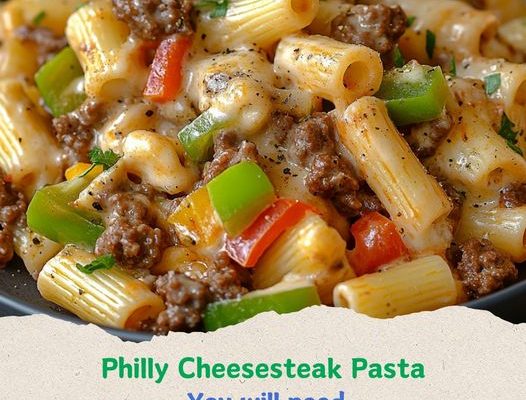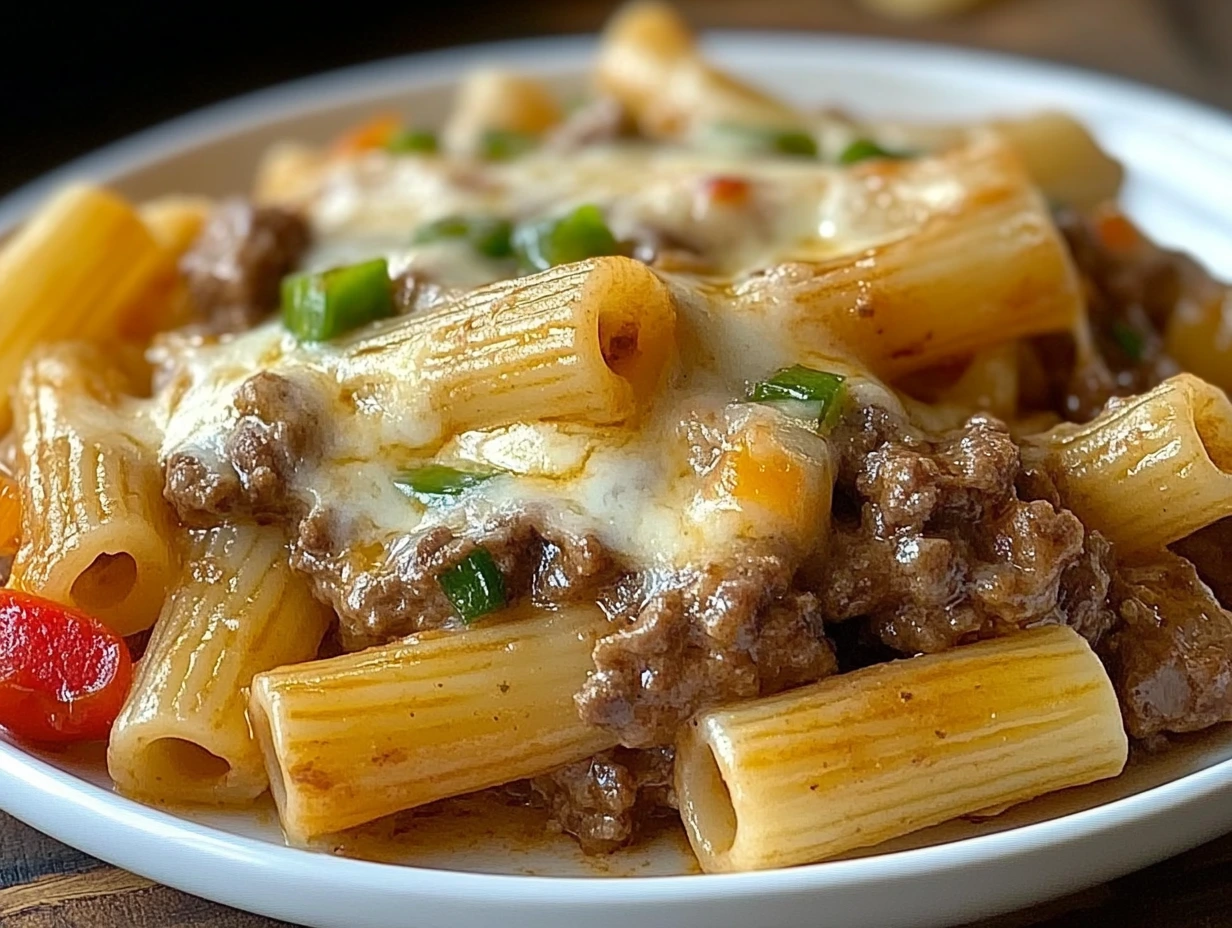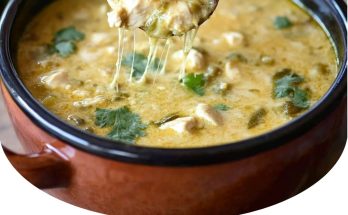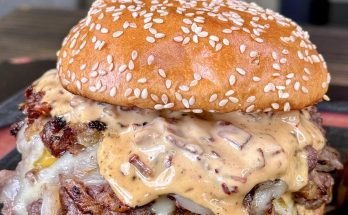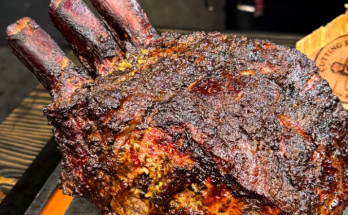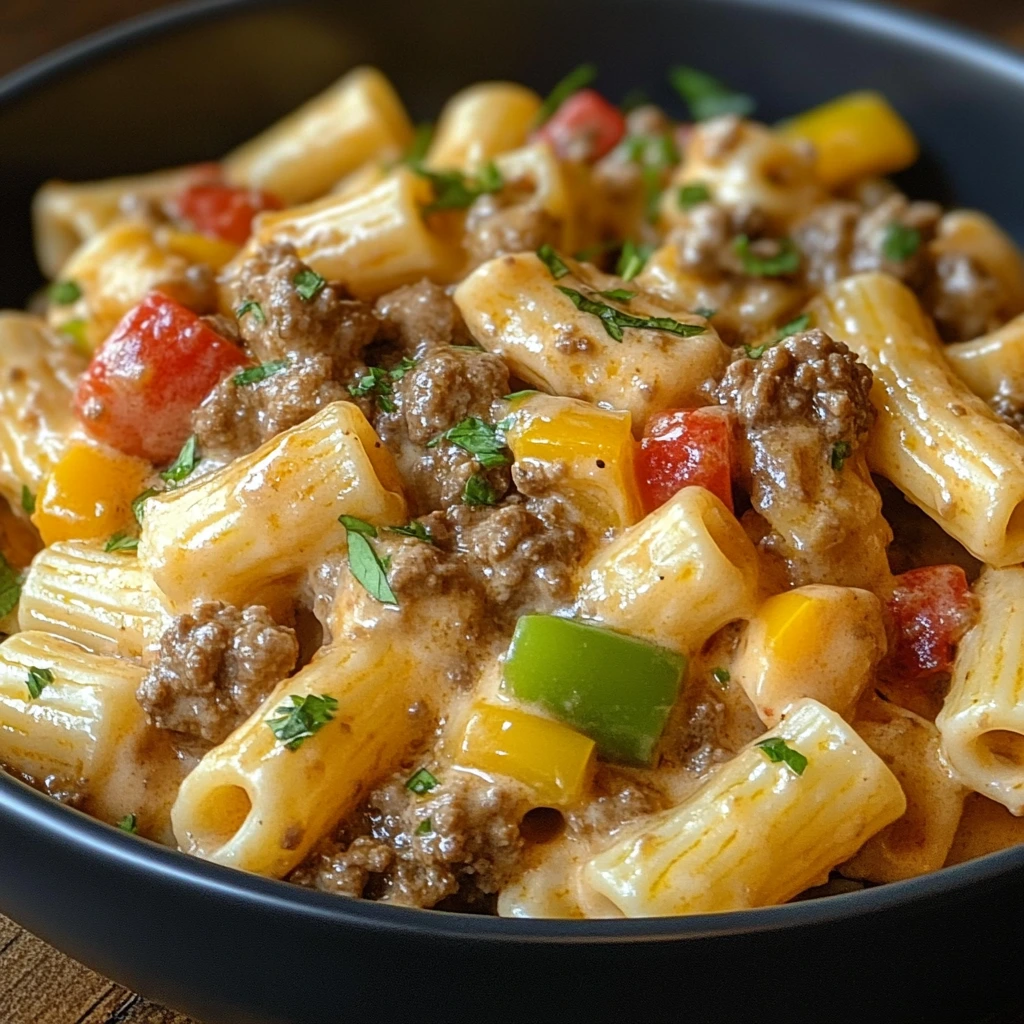
Philly cheesesteak pasta combines the rich flavors of a classic Philly cheesesteak with comforting pasta. This recipe is a delicious fusion of creamy cheese, tender beef, and sautéed vegetables, all stirred together with hearty pasta. If you’re a fan of the traditional Philly cheesesteak sandwich, this dish brings those classic elements together in a way that’s perfect for a cozy dinner.
Inspired by the origins of the iconic Philly cheesesteak, which was created in Philadelphia with thinly sliced beef, melted cheese, and sautéed peppers and onions, this pasta offers a fresh way to enjoy these flavors at home. While cheesesteaks are typically served on a roll, this recipe uses penne or rigatoni pasta to capture the sauce and cheese, making every bite deliciously creamy. This twist on a beloved sandwich brings a new, comforting layer to the table.
For those who love experimenting in the kitchen, the creamy provolone cheese topping melts beautifully under the broiler, adding a golden, bubbly finish. Whether you’re a pasta lover or a cheesesteak enthusiast, this fusion dish combines the best of both worlds. And with simple, accessible ingredients, this dish is perfect for a weekday dinner or a casual get-together with friends.
2. Ingredient List and Substitutions :
To make this Philly cheesesteak pasta recipe, gather simple, accessible ingredients that blend for rich, comforting flavors. Here’s a breakdown of the primary ingredients, along with a few tips for making substitutions or customizing the dish to suit your preferences.
- Main Protein: Choose between ground beef or steak strips. Ground beef is quick to cook and budget-friendly, while steak strips (like ribeye or sirloin) offer a more authentic, steakhouse texture. For an extra boost of flavor, lightly season or marinate the steak before cooking.
- Vegetables: Green bell pepper, onion, and garlic are essential for building the classic Philly cheesesteak flavor. The green bell pepper’s slight bitterness balances the sweetness of caramelized onions. If you’re looking for a milder or sweeter taste, consider substituting with red or yellow bell peppers.
- Pasta Choices: We recommend penne or rigatoni for their sturdy shape, which holds up well in the creamy sauce. For more pasta options, explore shells, cavatappi, or fettuccine on this list of pasta types.
- Cheeses: For that creamy texture, softened cream cheese is a must, while provolone cheese adds the authentic Philly flavor. Provolone melts beautifully and complements the savory flavors in the dish. If you’re unable to find provolone, mozzarella is a decent substitute, as it offers a similar melt and mild flavor.
- Broth and Seasoning: Beef broth enriches the sauce, giving it a robust, savory depth. Season with salt and pepper to taste, but don’t hesitate to add spices like red pepper flakes if you enjoy a hint of heat.
These ingredients can be easily adjusted to suit dietary needs. For a lighter dish, swap regular cream cheese with a reduced-fat version and opt for whole-wheat pasta.
3. Equipment Needed :
To prepare this Philly cheesesteak pasta recipe, you’ll need just a few essential pieces of kitchen equipment:
- Large Skillet or Sauté Pan: A heavy-bottomed skillet works best for evenly cooking the beef and vegetables.
- Pot for Boiling Pasta: Choose a pot that can comfortably hold enough water for the pasta to cook al dente.
- Broiler (Optional): For the final, melty cheese topping, use an oven broiler. If you don’t have one, a toaster oven set to a high temperature can achieve a similar effect.
With minimal equipment, this dish is easy to prepare and clean up.
4. Preparing the Pasta :
To start this Philly cheesesteak pasta recipe, cook the pasta to an al dente texture. This ensures the pasta is firm enough to hold up in the creamy sauce and absorb the flavors without becoming too soft.
- Boil Water: In a large pot, bring water to a rolling boil and add a generous pinch of salt to enhance the pasta’s flavor.
- Cook Pasta: Add penne or rigatoni pasta to the pot and cook according to package instructions until it reaches al dente (about 8-10 minutes for most pasta types).
- Drain and Set Aside: Drain the pasta in a colander, but don’t rinse. Setting the pasta aside without rinsing helps the sauce adhere better later.
For alternative pasta shapes or cooking tips, check out this pasta guide.
5. Sautéing the Vegetables :
The next step in making Philly cheesesteak pasta involves creating a flavorful base by sautéing vegetables. This step brings out the natural sweetness of the onions and peppers, complementing the savory meat and cheese.
- Heat Oil: In a large skillet, heat 1 tablespoon of olive oil over medium heat until it shimmers.
- Add Vegetables: Add the diced green bell pepper, onion, and minced garlic to the skillet.
- Sauté Until Softened: Stir occasionally for about 5-7 minutes, or until the vegetables are softened and the onions are translucent. This creates a flavorful, aromatic base for the dish.
For variation, add mushrooms or swap the bell pepper with a sweeter red bell pepper. To learn more about cooking with garlic and onions, check out this guide on garlic.
6. Cooking the Meat :
With the vegetables sautéed, it’s time to cook the meat for the Philly cheesesteak pasta. Whether using ground beef or steak strips, this step adds the signature savory depth to the dish.
- Add Meat to Skillet: Place the ground beef or steak strips into the skillet with the cooked vegetables. Break up the ground beef with a spatula if using, or spread the steak strips evenly in the pan.
- Cook Until Browned: Allow the meat to cook for about 5-7 minutes, stirring occasionally until it’s browned and cooked through. This step adds flavor as the meat browns.
- Drain Excess Fat (If Needed): If using ground beef, drain excess fat to avoid an overly greasy sauce.
For tips on choosing the best steak cuts for cooking, check out this steak guide.
FAQs :
1. Can I use a different cheese?
Yes, provolone is recommended for its mild flavor and meltability, but mozzarella or cheddar can work well, too. Each cheese adds a slightly different flavor profile, so feel free to experiment.
2. What type of steak works best?
If using steak strips instead of ground beef, go for tender cuts like ribeye or sirloin. These cuts cook quickly and stay juicy, adding an authentic steakhouse texture to the dish.
3. Is there a way to make this dish lighter?
Absolutely! Substitute regular cream cheese with reduced-fat cream cheese or a Greek yogurt cream cheese alternative. You can also use whole-wheat pasta for added fiber and nutrition.
4. How can I add spice?
For those who enjoy a spicy kick, try adding diced jalapeños, red pepper flakes, or a splash of hot sauce to the sauce or as a garnish.
5. What pasta shapes work well?
Penne and rigatoni are ideal for their shape and ability to hold sauce, but other hearty shapes like cavatappi or shells also work well.
These frequently asked questions provide tips to customize and adjust the recipe for various tastes and dietary preferences.
